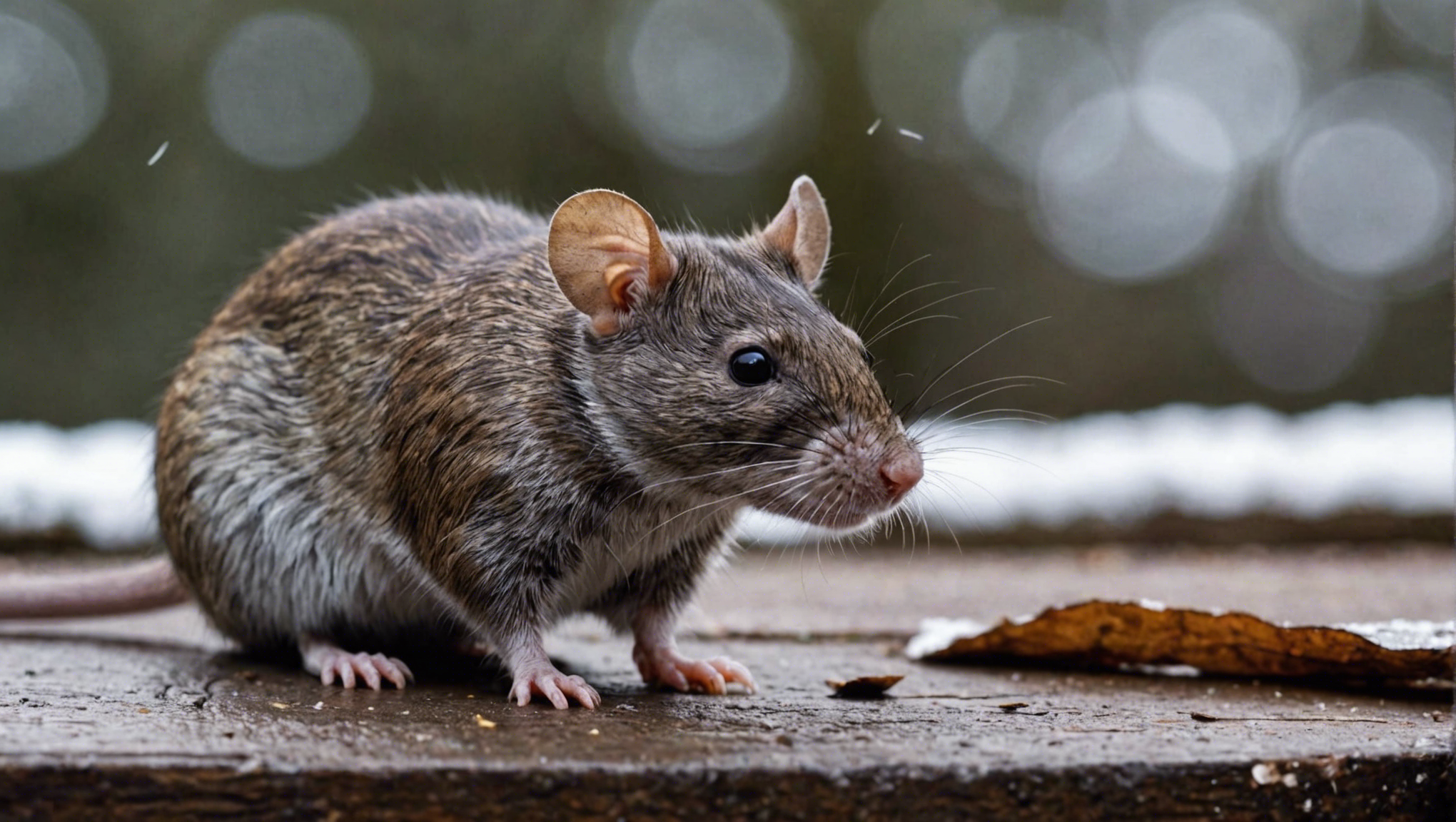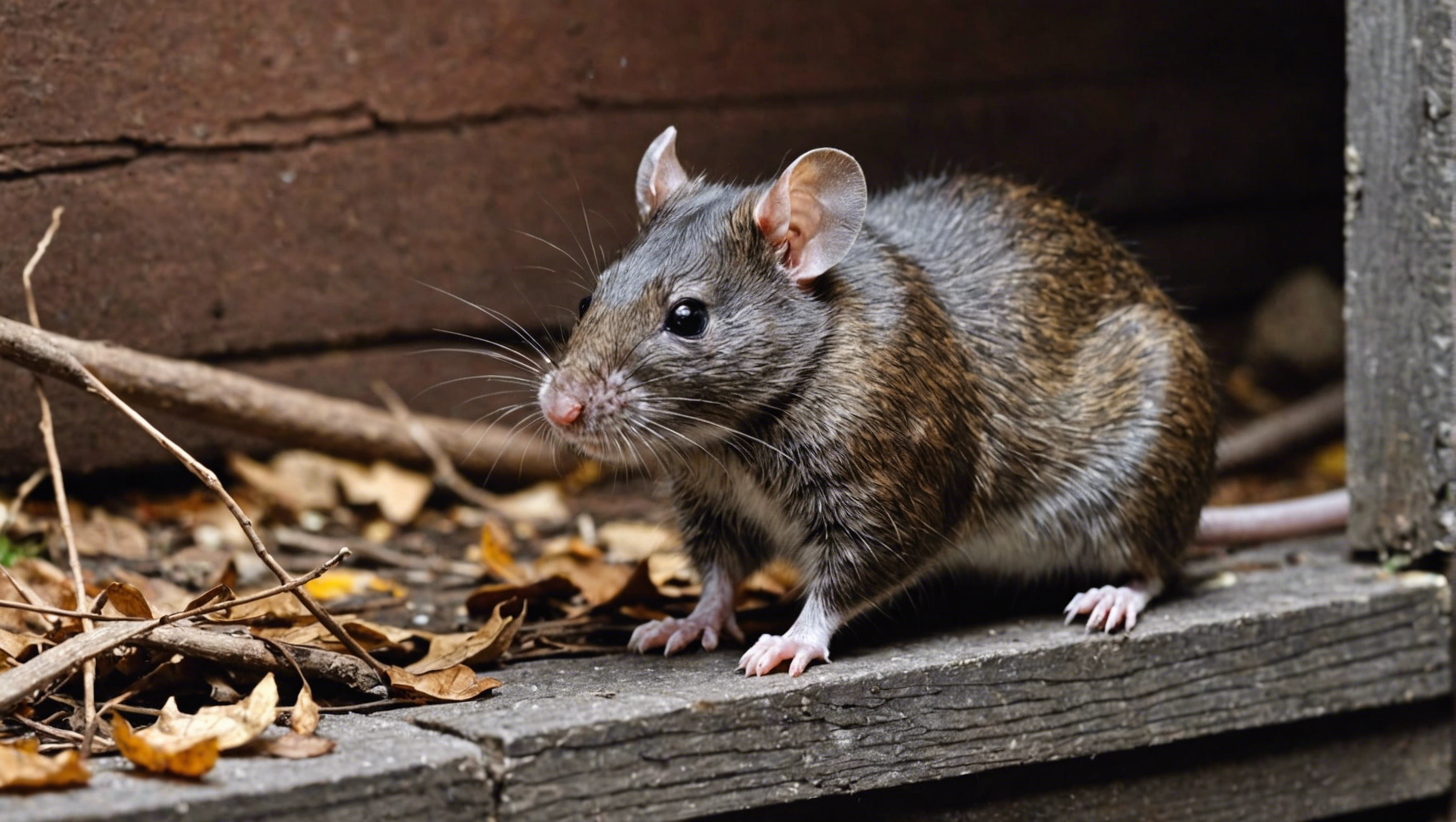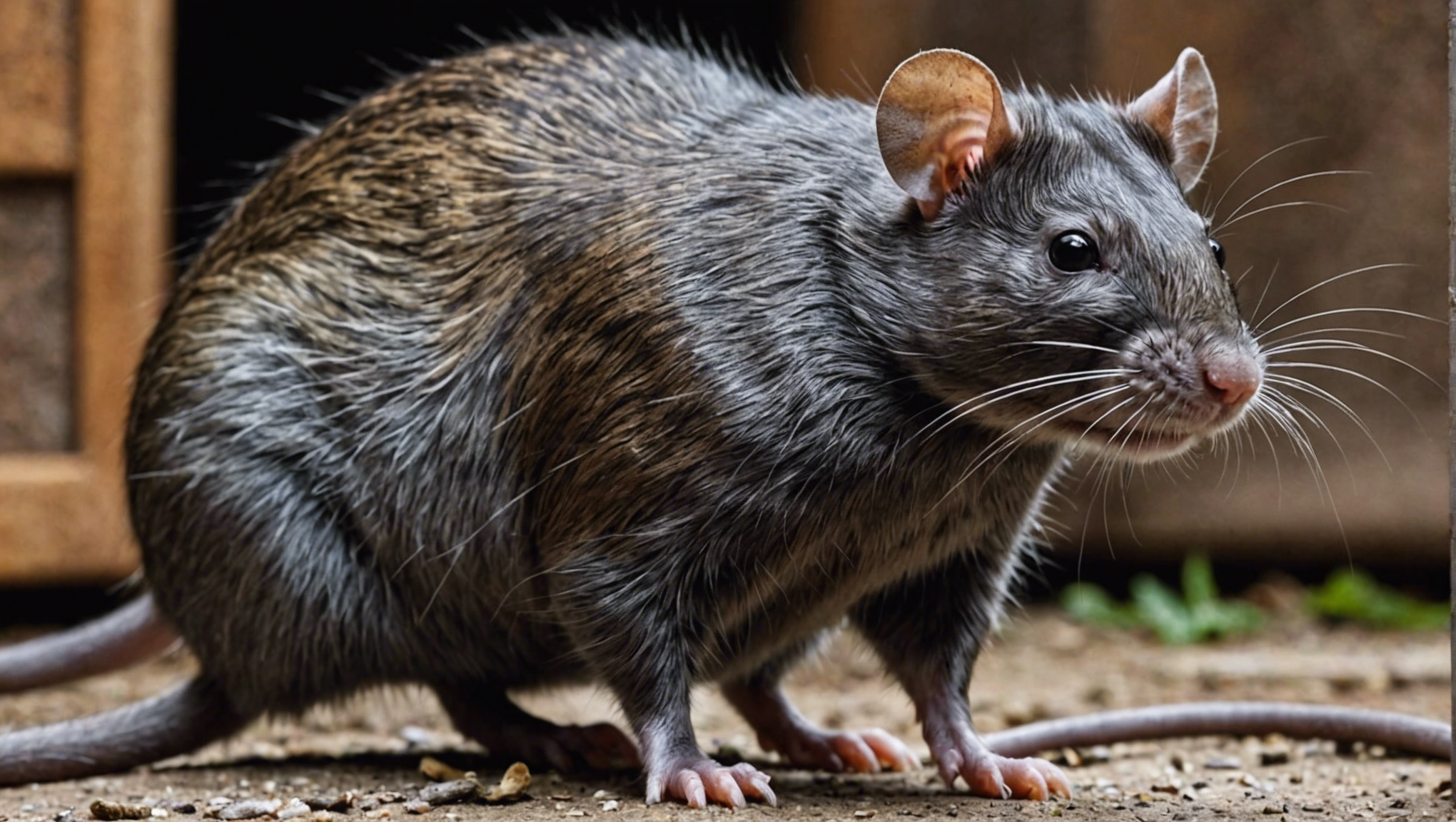“Learn how to keep rats and mice out this winter by effectively sealing your home! Don’t let these critters invade your space – take action now.”
Identifying Common Entry Points for Rodents

Overview
As an outdoor enthusiast who has been dealing with critters for decades, one of the common challenges I encounter is rodent infestations. Rats and mice can wreak havoc in homes and can be particularly tricky to eliminate if their entry points are not identified and sealed. In this article, we will explore some of the common entry points for rodents, specifically rats and mice, and how to address them effectively.
Exterior Entry Points
1. Gaps Around Pipes: Rodents can squeeze through surprisingly small gaps, so it’s essential to inspect areas where pipes enter the building.
2. Vents and Chimneys: Uncapped vents or chimneys provide easy access for rodents. Installing mesh screens can help prevent entry.
3. Cracks in Foundations: Small cracks in the foundation can be ideal entry points for rodents. Sealing these cracks can help keep them out.
Interior Entry Points
1. Gaps Around Doors and Windows: Poorly sealed doors and windows are common entry points for rodents. Weather-stripping and door sweeps can help reduce access.
2. Gaps in Walls: Mice can enter through even the tiniest holes in walls. Inspect for gaps and seal them with caulk or steel wool.
3. Attics and Basements: These areas are often vulnerable to rodent entry. Regularly inspect for signs of activity and seal any openings.
Preventive Measures
1. Keep a Clean Environment: Eliminate food sources and clutter that can attract rodents.
2. Trim Vegetation: Trim tree branches and shrubs away from the house to remove potential pathways for rodents to access the roof.
3. Regular Inspections: Conduct routine inspections to identify and address entry points before they become major issues.
By being proactive in identifying and sealing common entry points for rodents, you can effectively prevent infestations and protect your home from these pesky critters. Remember, an ounce of prevention is worth a pound of cure when it comes to rodent control.
Using Sealant and Caulk to Close Gaps and Cracks

Keeping rodents like rats and mice out of your home is essential for maintaining a healthy and safe living environment. One effective way to prevent infestations is by sealing gaps and cracks where these pests can enter.
Identifying Problem Areas
Before sealing any gaps or cracks, it’s important to identify where these entry points are located. Common areas where rats and mice can squeeze through include around pipes, doors, windows, vents, and even gaps in the foundation. Inspecting your home thoroughly can help pinpoint these vulnerable spots.
Choosing the Right Materials
Once you’ve identified the gaps and cracks, the next step is to seal them using the appropriate materials. Depending on the size of the opening, you may use materials such as steel wool, caulk, wire mesh, or metal kick plates. These materials are sturdy and can effectively block rodents from entering.
Sealing Techniques
When sealing gaps and cracks, it’s important to pay attention to detail to ensure a tight seal. Start by cleaning the area thoroughly to remove any debris that could prevent the sealant from adhering properly. Then, apply the chosen material generously to completely fill the gap or crack.
Maintaining Your Home
Regular maintenance is crucial to keep rodents at bay. Periodically inspect your home for any new gaps or cracks that may have formed over time. By promptly sealing these openings, you can prevent rat and mouse infestations before they become a major problem.
By taking proactive measures to seal gaps and cracks in your home, you can effectively prevent rat and mouse infestations. Protecting your living space from these pests will not only safeguard your property but also contribute to a healthier and more peaceful environment for you and your family.
Installing Door Sweeps and Weather Stripping

Rats and Mice: Installing Door Sweeps and Weather Stripping
Dealing with infestations of rats and mice can be a real nuisance for homeowners. These critters can find their way into your home through small gaps and crevices around the doors. One effective way to keep them out is by installing door sweeps and weather stripping.
What are Door Sweeps?
Door sweeps are long strips made of material like rubber or plastic that are attached to the bottom of doors. They form a barrier that blocks the entry of rodents and insects, as well as preventing drafts and dust from entering your home. Installing door sweeps is a cost-effective and easy solution to keep pests at bay.
How to Install Door Sweeps
To install a door sweep, you will need a tape measure, a hacksaw, and screws. Start by measuring the width of your door to ensure you get the right size sweep. Trim the sweep to fit your door if needed, then attach it to the bottom of the door using screws. Make sure the sweep forms a tight seal with the threshold to prevent any gaps.
What is Weather Stripping?
Weather stripping is a narrow piece of material, such as foam, felt, or vinyl, that seals the edges of doors and windows to prevent air infiltration and leakage. It also helps in keeping out pests like rats and mice, who often sneak in through these small openings.
How to Install Weather Stripping
Installing weather stripping is a straightforward process. Measure the length of the door or window that needs to be sealed and cut the weather stripping accordingly. Peel off the adhesive backing and press the stripping firmly against the door or window frame. Ensure that there are no gaps or spaces left for pests to enter.
By taking these simple steps to install door sweeps and weather stripping, you can effectively block the entry points for rats and mice. Keeping your home well-sealed not only protects you from pests but also helps in maintaining energy efficiency by reducing drafts and air leakage.
Keeping Trees and Shrubs Trimmed Away from Your Home
Why Is It Important?
Rats and mice are common household pests that can pose a threat to both your property and health. These rodents are known to seek shelter and food sources near human dwellings, making trees and shrubs attractive nesting spots. By keeping trees and shrubs away from rats and mice, you can reduce the risk of infestations in your home.
Practical Measures
1. Trim Branches
Regularly trim tree branches that are close to your house or roof. Overhanging branches can provide rodents with easy access to your home, allowing them to find entry points through the roof or attic.
2. Clear Debris
Remove any debris, such as piles of leaves or wood, from around trees and shrubs. These materials can serve as hiding spots for rodents, encouraging them to nest closer to your home.
3. Use Gravel or Mulch
Consider replacing vegetation around your home with gravel or mulch. These materials create a barrier that makes it harder for rats and mice to navigate and hide near your property.
4. Maintain Yard Hygiene
Keep your yard clean and well-maintained. Avoid leaving food sources, such as fallen fruits or bird feed, near trees and shrubs as they can attract rodents looking for easy meals.
Natural Deterrents
1. Plant Rodent-Repellent Plants
Certain plants like mint, lavender, or marigold, have natural repellent properties that can deter rodents from settling near your home. Consider planting these around your garden or near trees and shrubs.
2. Use Essential Oils
Essential oils like peppermint or eucalyptus are known to have a strong scent that rodents dislike. Dilute these oils in water and spray the solution around trees and shrubs to create an effective barrier.
Regular Inspections
Make it a habit to inspect the area around your home for any signs of rodent activity. Look out for droppings, chew marks, or gnawed tree bark, as these can indicate a potential rat or mice presence.
By taking proactive steps to keep trees and shrubs away from rats and mice, you can protect your home from potential infestations and ensure a safe living environment for you and your family.
Storing Food in Rodent-Proof Containers
As an outdoor enthusiast who has been dealing with critters for decades, I understand the importance of keeping food safe from rats and mice. These pesky rodents can quickly find their way into our pantries and wreak havoc on our supplies if we’re not careful. One of the best ways to prevent this is by storing food in rodent-proof containers.
Why Rodent-Proof Containers are Essential
Rats and mice have sharp teeth that can chew through plastic bags, cardboard boxes, and even some types of metal containers. They are attracted to the smell of food and will go to great lengths to access it. Using rodent-proof containers is essential to keep your food safe and prevent contamination.
Types of Rodent-Proof Containers
There are various types of containers specifically designed to keep rats and mice out. Some options include:
- Plastic bins with airtight seals
- Glass jars with screw-on lids
- Metal containers with secure locking mechanisms
Tips for Storing Food Safely
Here are some tips to help you effectively store food in rodent-proof containers:
- Avoid storing food in paper or plastic bags that rodents can easily chew through.
- Regularly check for any signs of rodent activity near your food storage area.
- Keep your pantry clean and free of crumbs that can attract rats and mice.
- Consider using traps or repellents as an additional measure to keep rodents at bay.
Final Thoughts
By investing in rodent-proof containers and following these tips, you can protect your food supplies from rats and mice. Don’t underestimate the determination of these creatures – take proactive steps to secure your food storage and enjoy peace of mind knowing that your provisions are safe and sound.
Regularly Inspecting Your Home for Signs of Rodent Activity
As an outdoor enthusiast who has been dealing with critters for decades, I understand the importance of regular inspections to keep rodents like rats and mice out of your home. These pests can cause damage to your property, contaminate food, and spread diseases. By being proactive and vigilant, you can prevent infestations and protect your home.
Exterior Inspection
Start by inspecting the exterior of your home for any signs of rodent activity. Look for gaps and openings in walls, doors, and windows that could serve as entry points. Seal any cracks or crevices using materials like steel wool or caulk to prevent rodents from getting inside. Trim trees and bushes away from the house to eliminate possible pathways for rodents.
Interior Inspection
Once you’ve secured the exterior, move on to the interior of your home. Keep an eye out for droppings, gnaw marks, or shredded paper in dark corners, behind appliances, and in cabinets. Check for nests made of shredded materials like paper, fabric, or insulation. Pay attention to any unusual odors or sounds coming from walls or ceilings.
Kitchen and Pantry
Rats and mice are particularly attracted to food sources, so focus your inspection on the kitchen and pantry areas. Store food in airtight containers and clean up any spills or crumbs immediately. Check for chewed packaging or holes in food containers that could indicate rodent activity.
Garage and Attic
Don’t forget to check less frequently visited areas like the garage and attic. These spaces provide cozy hiding spots for rodents to nest. Keep stored items organized and elevated to reduce potential nesting sites. Look for signs of rodent activity such as droppings, chewed wires, or damaged insulation.
Professional Inspection
If you suspect a significant rodent infestation or are unsure of how to handle the situation, consider hiring a professional pest control service. They have the expertise and tools to effectively eliminate rodents from your home and prevent future problems. Regular inspections by professionals can give you peace of mind and ensure your home remains rodent-free.
By taking the time to regularly inspect your home for signs of rodent activity, you can proactively address any issues before they escalate into full-blown infestations. Stay vigilant, seal entry points, and maintain a clean environment to keep rats and mice at bay.
